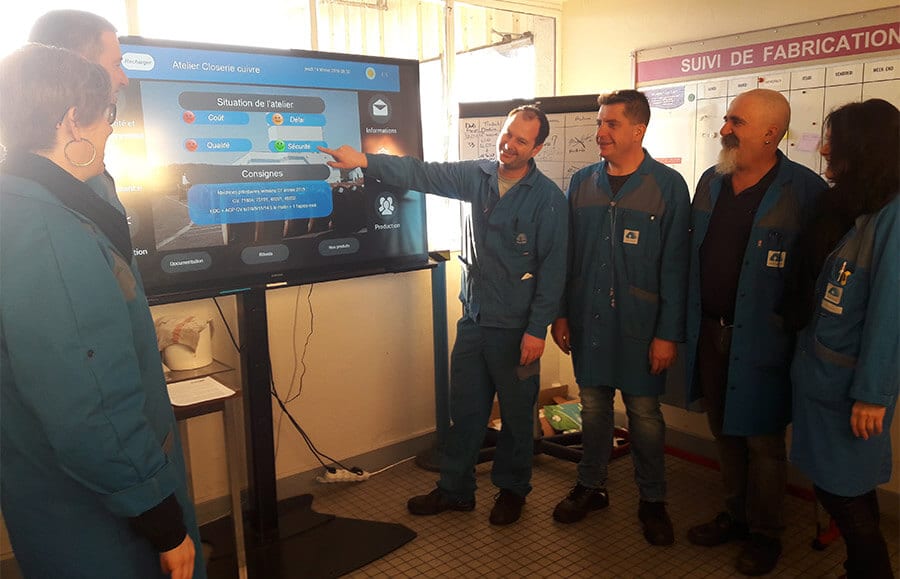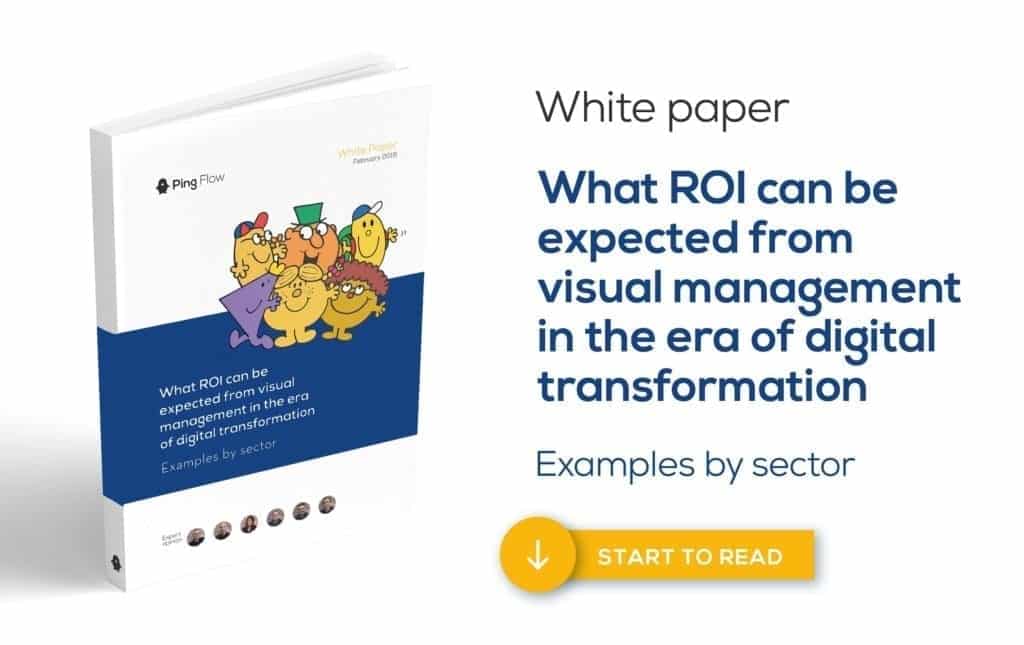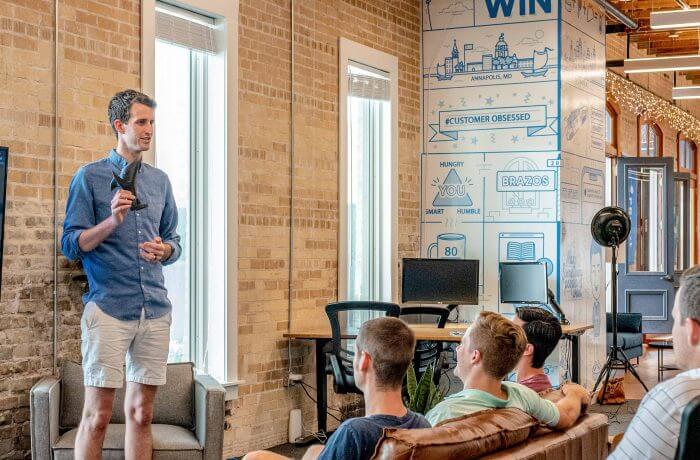
Visual management and collaborative projects: A real support for team briefings

Connected visual management screens are therefore excellent ways to publish your objectives, results obtained and action plans. Publication of real-time key information extracted from your information systems provides real-time project monitoring and thus quick reactions to issues. And you can also publish specific information about departmental activities (new projects, new rules …) Also, you can easily use them to illustrate regular briefings, to capture the attention of team members and to encourage them to participate. They will naturally feel more involved in their department’s activity. Beyond being a means of communication, visual management can be a real tool to promote open discussions with your teams and demonstrate transparency.
Visual management and collaborative projects: A step closer to zero paper management
Use visual management to progress towards completely zero paper environments. This is the case for the ACOME COMPANY who manufacture cables, fibre optics and synthetic tubes. ACOME decided to deploy visual management screens for three reasons: Digitise information flows on the road to zero paper, communicate upward reporting and downwards information in real time and to connect screens to production data from MES management systems.

The benefits have been considerable since deploying screens: ‘The new system has become second nature. Users now consult screens as a reflex to obtain information. They ask for more data to be added, it’s very encouraging. I know that in meetings, the collaborative approach has really changed, visual management is a real support. People are very enthusiastic, which makes management more efficient, clearer and more participative.’




